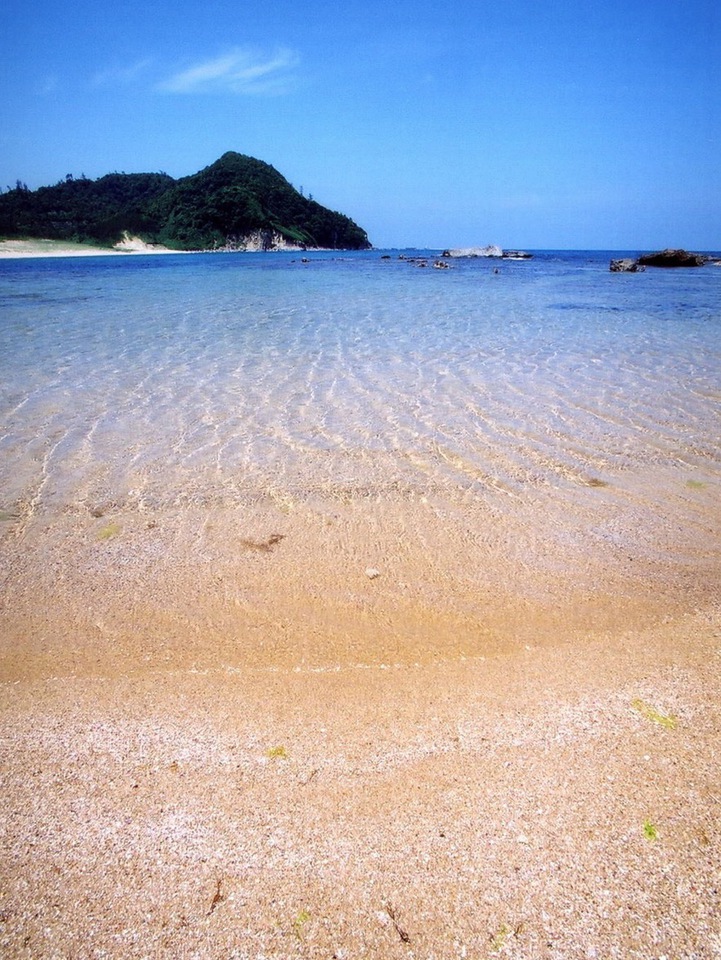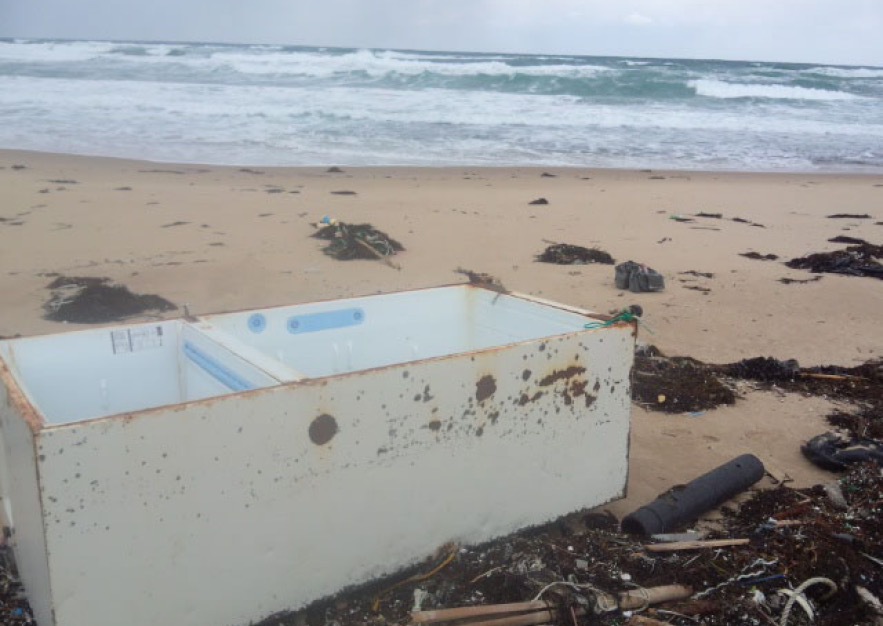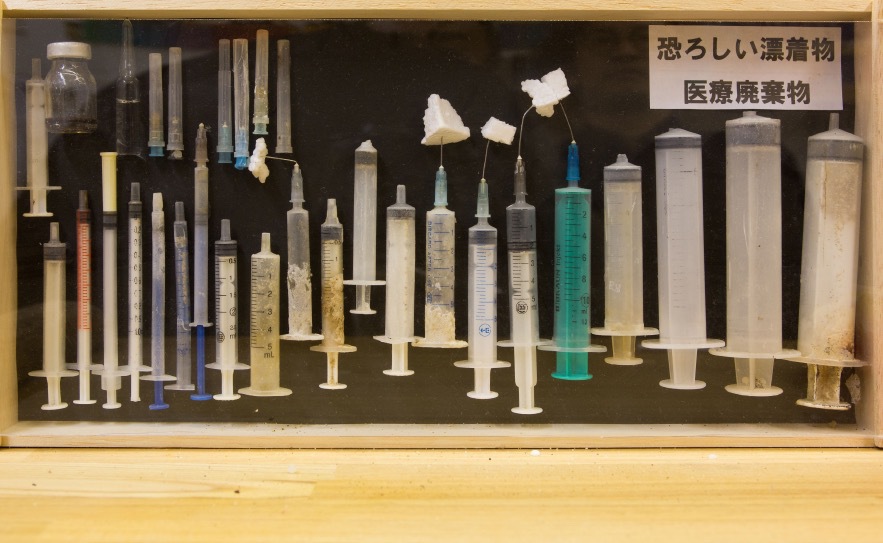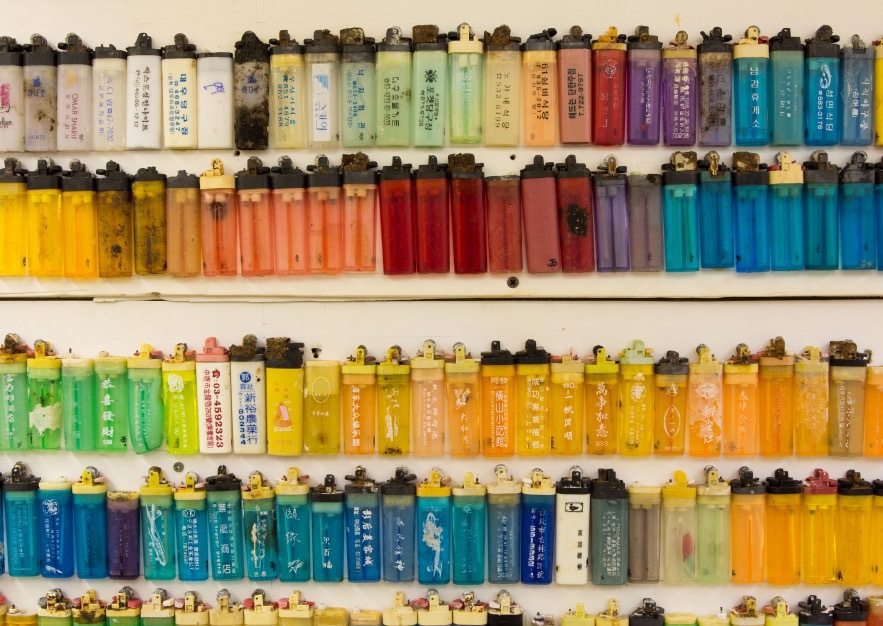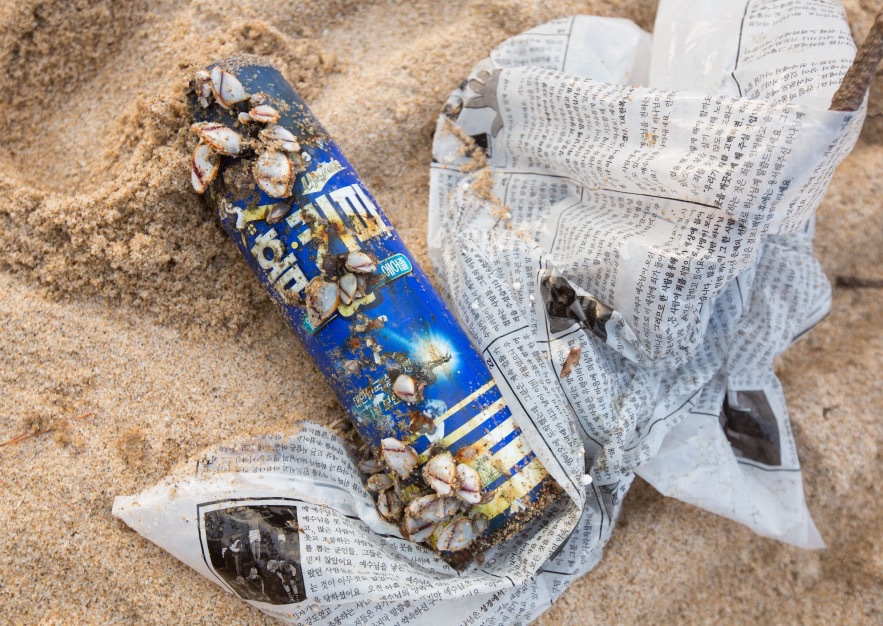Japanese refer to picturesque beaches with white sand and verdant pine trees as hakushaseisho (literally, “white sand, green pines”) and have cherished them since ancient times. Located about 120 km (75 miles) north of Kyoto and jutting into the Sea of Japan, Tango Peninsula is blessed with many beautiful hakushaseisho beaches. One of the most interesting of them is the mysterious “singing sand” beach.
When you walk on the sand, it makes a pleasant squeaking sound. “Singing sand contains a lot of silica. The sound comes from the vibrations of the silica grains,” explains a tourist guide at the beach, “but conditions must be just right for the sand to sing.”
The most important condition is that the sand remains clean. Singing sand is very delicate. In the busy swimming season, when the beach is crowded with visitors, the sand doesn’t “sing” as vibrantly—just from the oil on people’s bare feet. Locals work tirelessly to keep the beach clean to protect the ancient singing sand.
Residents work together with the local government to protect the singing sand beach and several measures have been put in place. It was the first beach in Japan to be designated as a “non-smoking beach” in 2001, and it is forbidden to build structures such as restaurants and changing facilities on the beach. In addition, the local government started charging a fee to park at the nearby parking lots, and a portion of the proceeds go to cover cleanup expenses. When beachgoers observe these rules, they help protect this precious natural wonder.
Unfortunately, their efforts are thwarted by the vast amount of trash that washes ashore on this delicate beach. It is relentlessly bombarded by everything from household supplies to TVs and refrigerators and, at times, even dangerous medical waste. Syringes, IV (intravenous) bags, and other trash litter the once-pristine beach. Although one might imagine that it was dumped there by people in the area, much of it actually comes across the sea from neighboring countries such as China and South Korea. The trash is carried by the westerlies and ocean currents that flow along the coast of the Japanese archipelago and finally washes up on the beach. Once, locals planned to hold a barefoot running event at a nearby beach. But it was eventually decided that shoes would have to be worn due to concern that hazardous waste like syringes might cause injury.
Some of the trash that has drifted ashore from neighboring countries is on display at a local museum. Many children visit the museum, and gaze sadly at the display, wondering why people would litter such a beautiful beach.
“But,” explains one of the locals who engages in cleanup activities, “One day, a foreigner who lives in Japan saw locals picking up trash on the beach. He was appalled that so much trash, like polyethylene tanks and plastic bottles, had washed ashore from his country. Since then, he has come to the beach to help clean up every year. There are some people who litter and others who help clean up. More people are realizing that it is a worldwide issue that goes beyond national borders.”
All sorts of trash wash ashore, even large items such as refrigerators.
Dangerous items such as medical waste are found on the beach as well.































































































































